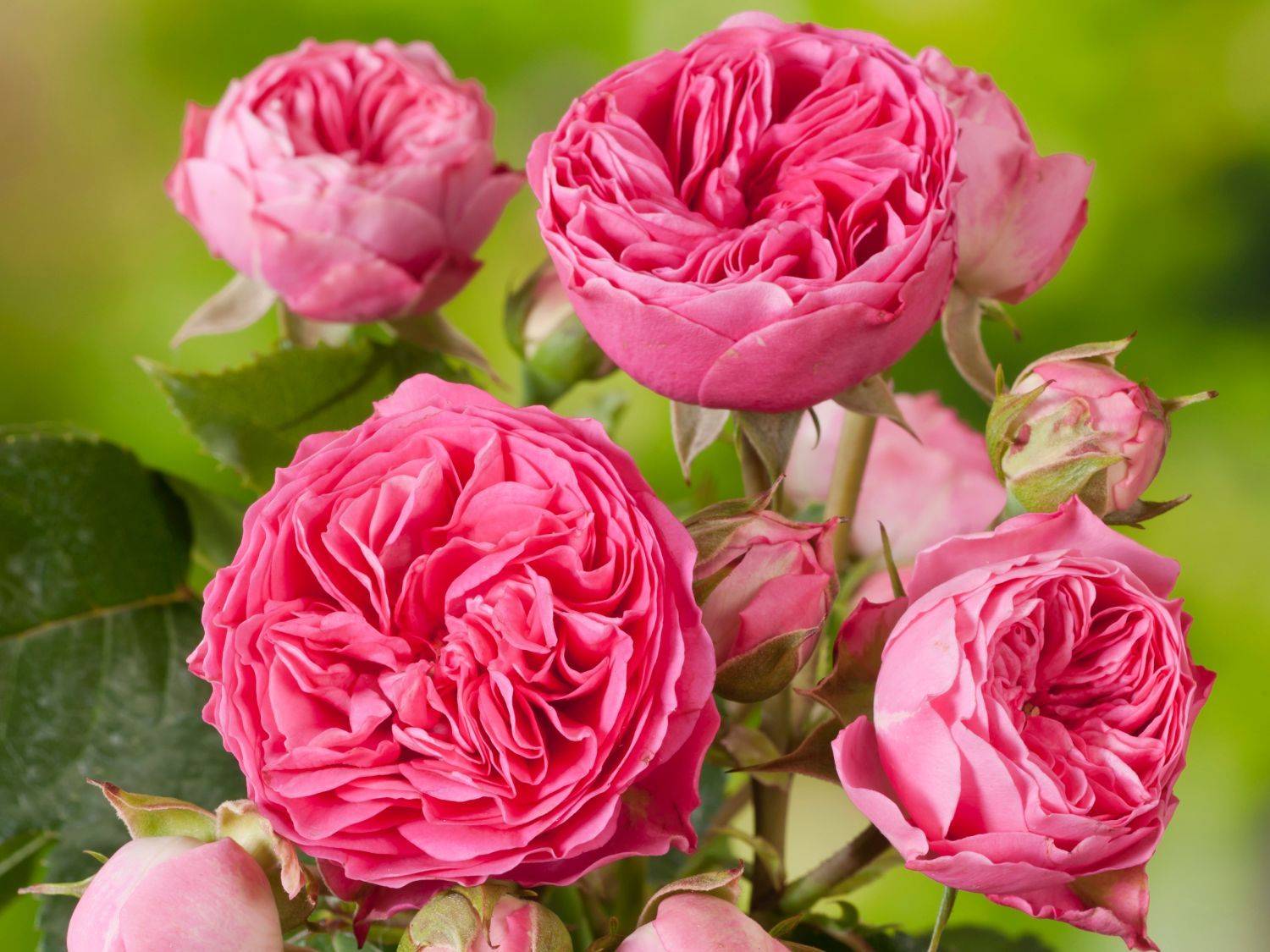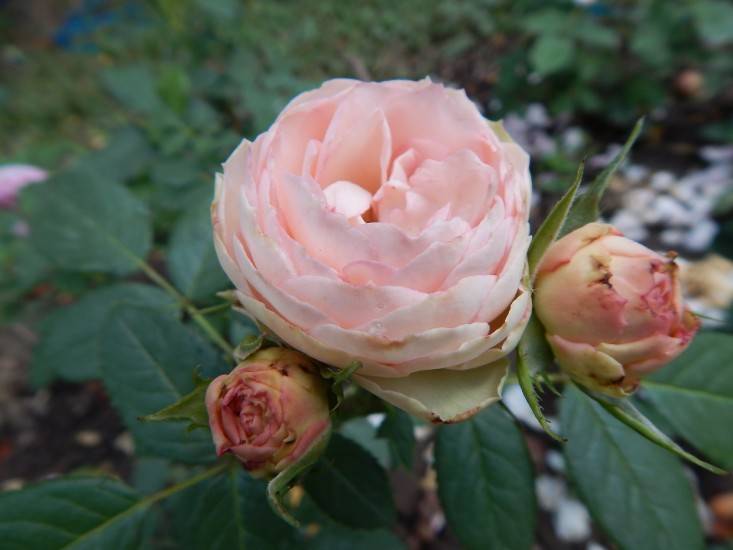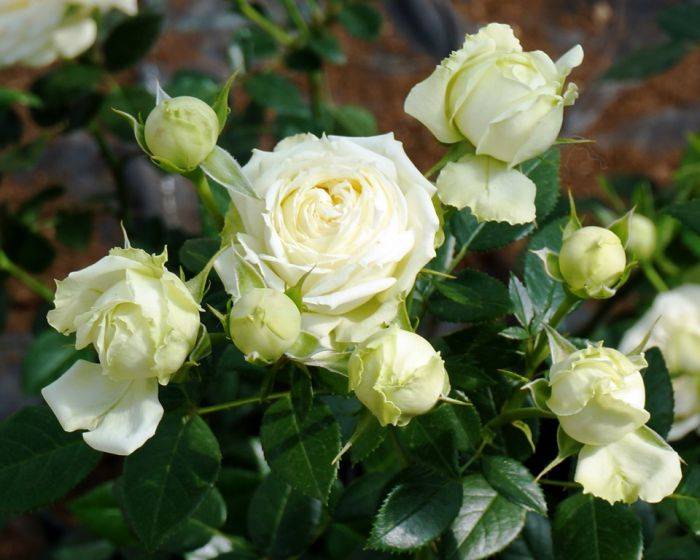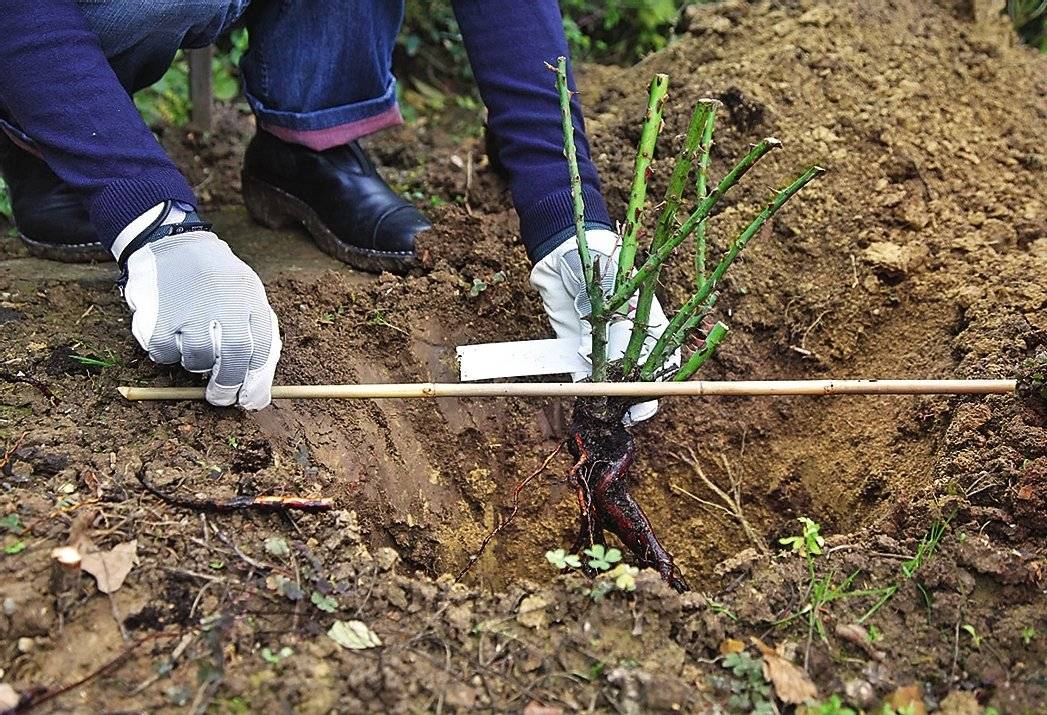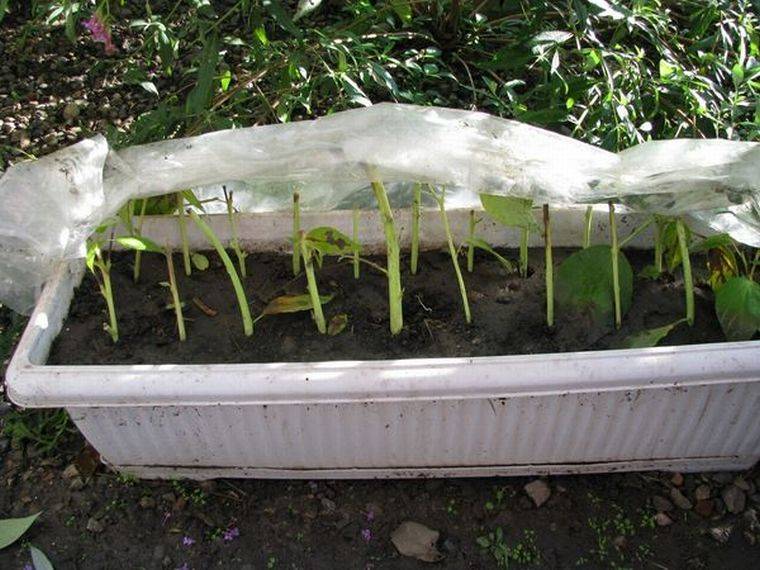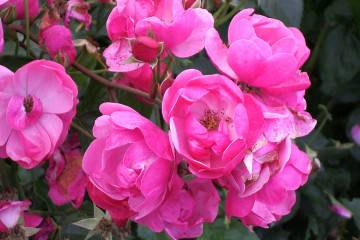Rose Rococo (Rokoko) - description of the variety and and its varieties
Content:
A delightful aroma, large delicate flowers and a weather-resistant crown distinguish the Rococo rose, which is popular in Russia and abroad. The seedlings purchased and planted in spring will give lush flowering in the first year.
Rose Rococo (Rokoko) - what kind of variety
Under the unifying term Rokoko, the German nursery Rosen Tantau from 2009 to 2016. released a series of cut roses aimed at greenhouse cultivation and in private gardens.
Short description
The Rococo group was assigned by the originator to a larger series called Nostalgic Dreams. All varieties within the series resemble historical roses, which today can only be admired in botanical nurseries or in paintings by artists of the past.
The bushes are characterized by strong but flexible upward-pointing shoots. The crown is not thick, well translucent.
Advantages and disadvantages of the variety
Among the advantages of the series is the ability to grow any variety in a greenhouse to obtain high-quality cut or in a garden plot to decorate the landscape. Long and abundant flowering, together with the high characteristics of the flowers, ensured high demand for the novelties of the Tantau company. Of the shortcomings, buyers noted the exactingness of roses to fertilization, as well as protection from diseases and pests.
Popular varieties of the Rococo variety
Today, the Rococo series includes several varieties, the most famous of which are the following.
Lovely Rokoko
A cutting re-flowering hybrid tea variety was presented to the public by Tantau in 2011. After another 3 years, it went on the free market with slightly improved characteristics, which made it possible to grow the rose not only in greenhouses, but also in the open field. The diameter of the corollas is up to 8 cm, the shape is peony, the shade is pale pink, the type is terry. There is practically no aroma. Loose clusters of buds are formed at the ends of the shoots.
Magic Rokoko
Cutting variety of terry re-flowering rose. The buds open up to 6 cm in diameter. Terry corollas (on average 25 petals) of intense pink hue. The buds are collected in lush inflorescences of 5 pcs. The height of the bush is small, only 50-80 cm. The shoots are strong and durable. There is almost no aroma. The variety is recommended for cultivation in greenhouses and open field.
Lemon Rokoko
A re-flowering floribunda of a creamy greenish hue, turning into a delicate yellow as the corolla opens. Terry corollas up to 8 cm in diameter.
Playful Rokoko rose variety
Pion-shaped, profusely flowering cut variety. The diameter of the flowers is up to 6 cm, the shade of the petals is pink, the corollas are terry (on average, up to 20 petals). There is almost no aroma. The height of the bushes is small, up to 80 cm. At the ends of the shoots, the buds are collected in inflorescences of 3-5 pcs. in everyone. The leaves are dark green with a glossy sheen. The variety is resistant to black spot and powdery mildew.
Growing a flower
Saplings of any of the varieties of the Rococo series should be purchased in a specialized nursery, which serves as a reliable guarantee that the future bush will correspond to all varietal characteristics declared by the originator.
Seedlings with a closed root system and three strong shoots are mainly used as planting material.
The best time for planting is spring, when the soil warms up to 10 ° C, usually in early May. If an autumn planting is chosen, then the best time for it is the first decade of September, when at least 3 weeks remain before stable frosts.
Seat selection
The place for planting is chosen in an illuminated area, since in the shade the buds are noticeably smaller. Do not plant roses in low-lying places, as this leads to stagnation of moisture at the roots and their rotting.
How to prepare the soil and flower for planting
The best soil for Rococo climbing roses is loam, which has good moisture holding capacity. Sandy loam soils are enriched with humus. Before planting in the fall, the garden bed is dug up, loosened, humus is introduced into it, and planting holes are dug next spring.
Planting procedure step by step
The order of work is as follows:
- Planting holes for the Rococo rose variety are dug at a distance of 1.5-2 m from each other. The required hole depth is 40 cm.
- If a seedling with an open root system, then soak it for 12 hours in a solution of a root former (root).
- The root collar is immersed in a hole just below the surface of the soil.
- The pit is filled with soil, to which a little wood ash, 40 g of superphosphate, and also a few handfuls of humus are added.
- The soil around the bush 40-50 cm around is mulched with sawdust or peat.
- Water abundantly.
Plant care
The principles of care are common to all Rococo varieties.
Watering rules and humidity
From spring to autumn, watering should be regular if the available rainfall is insufficient. Usually roses are watered every week, and more often in the south. 1-2 buckets are poured under each bush.
Top dressing and soil quality
In early spring, fertilizing begins with nitrogen fertilizers to stimulate the growth of green shoots. With the distillation of the buds, fertilizers should contain mainly phosphorus and potassium. The optimum composition has "Agricola-Rosa", which can be applied every 2 weeks. As a nitrogen supplement, a mullein solution is suitable at the rate of 10 liters per 50 liters of water. At the end of summer, feeding can be stopped so that the plant goes into a dormant stage before wintering.
Pruning and replanting
Regularly, the bushes require sanitary pruning: they remove broken shoots affected by diseases, and also cut off the faded tops of the branches 1-2 pairs of leaves below the bud. In the spring, the bushes are cut to a third of the length of the shoots.
Features of wintering a flower
If the winter temperature drops below -20 ° C, then it is recommended to cover the bushes, as well as to huddle. This is done after the night temperatures have dropped to −2 ° C.
Blooming rose
The opening of one bud takes 3-5 days, during which its original shade becomes brighter and darker.
A period of activity and rest
The beginning of forcing of buds is the first decade of June. In the future, as new shoots grow, the following buds will form.Flowering ends with a drop in the average daily temperature below 10 ° C.
Care during and after flowering
During flowering, it is vital for roses to get plenty of water, water, sun and nutrients. Faded buds must be cut off so that the bush does not waste energy on ripening the seeds.
What to do if it does not bloom
The main reasons for the lack of flowers are the lack of sun and fertilizer. In poor soil, the rose will lose the splendor of the crown, the buds will become weak and will not even open. It is necessary to add mineral dressing, and after it, after a few days, pour it with a solution of humate.
Flower propagation
Rococo bush roses do not propagate by seed method. If there is already a healthy bush on the site, a year after planting, cuttings can be cut from it for reproduction.
To obtain planting material at the beginning of summer, shoots with 3 pairs of leaves are cut, which can be rooted right there in the garden bed. Be sure to put a cap from a cut plastic bottle on top. With successful rooting, young bushes are planted in a permanent place at the end of May next spring.
Diseases, pests and ways to control them
With budding in spring, rose bushes become very vulnerable to diseases and pests. For prevention, they are treated sequentially with an interval of 7-10 days:
- bordeaux liquid or HOM. Will help strengthen the bush's immunity to fungal diseases;
- phytoverm. Spraying is carried out against all groups of rose pests.
Caring for Rococo coincides with the standard agricultural technique for hybrid tea varieties. This rose is recommended for those who already have some experience in growing. But a beginner will also be able to achieve lush flowering if he can purchase high-quality planting material.

